Related Research Articles

James III was King of Scots from 1460 until his death at the Battle of Sauchieburn in 1488. He inherited the throne as a child following the death of his father, King James II, at the siege of Roxburgh Castle. James III's reign began with a minority that lasted almost a decade, during which Scotland was governed by a series of regents and factions who struggled for possession of the young king, before his personal rule began in 1469.
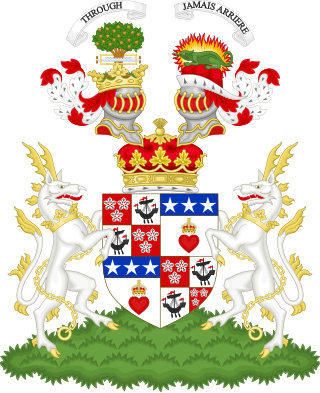
Duke of Hamilton is a title in the Peerage of Scotland, created in April 1643. It is the senior dukedom in that peerage, and as such its holder is the premier peer of Scotland, as well as being head of both the House of Hamilton and the House of Douglas. The title, the town of Hamilton in Lanarkshire, and many places around the world are named after members of the Hamilton family. The ducal family's surname, originally "Hamilton", is now "Douglas-Hamilton". Since 1711, the dukedom has been held together with the Dukedom of Brandon in the Peerage of Great Britain, and the dukes since that time have been styled Duke of Hamilton and Brandon, along with several other subsidiary titles.
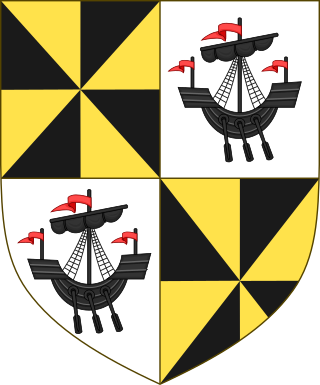
Colin Campbell, 1st Earl of Argyll was a medieval Scottish nobleman, peer, and politician. He was the son of Archibald Campbell, Master of Campbell and Elizabeth Somerville, daughter of John Somerville, 3rd Lord Somerville. He had the sobriquet Colin Mulle, Bold Earl Colin.

James Hamilton, 1st Duke of Châtellerault, 2nd Earl of Arran, was a Scottish nobleman and head of the House of Hamilton. A great-grandson of King James II of Scotland, he was heir presumptive to the Scottish throne. Arran was Regent of Scotland during the minority of Mary, Queen of Scots from 1543 to 1554, when he lost the regency to Mary of Guise. At first pro-English and Protestant, he converted to Catholicism in 1543 and supported a pro-French policy. He reluctantly agreed to Mary's marriage to Francis, eldest son of King Henry II of France, and was rewarded by Henry by being made Duke of Châtellerault in 1549. During the Scottish Reformation, Châtellerault joined the Protestant Lords of the Congregation to oppose the regency of Mary of Guise, and lost his French dukedom as a result.

James Douglas, the 4th Lord of Dalkeith, was created the 1st Earl of Morton in 1458.

Earl of Kilmarnock was a title created twice in the Peerage of Scotland for the Boyd family. It was first created in 1454 for Robert Boyd, Great Chamberlain of Scotland. It was created a second time in 1661 for William Boyd, 10th Lord Boyd. Both titles were forfeited in 1746.
Robert Boyd, 1st Lord Boyd was a Scottish statesman, Lord Chamberlain of Scotland from 1467.
Robert Boyd, 4th Lord Boyd was a Scottish nobleman who supported various factions attempting to dominate Scottish politics during the reign of King James V and the minority of Mary, Queen of Scots.
Robert Boyd, 5th Lord Boyd was a Scottish noble and courtier.
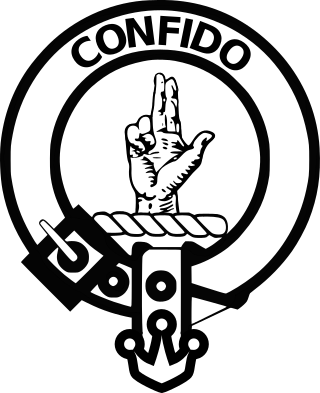
Clan Boyd is a Scottish clan of the Scottish Lowlands and is recognized as such by the Lord Lyon King of Arms.
John Hamilton, 1st Marquess of Hamilton (1540–1604) was the founder of the long line of the marquesses and dukes of Hamilton in Scotland.
Robert Stewart, 1st Earl of Orkney and Lord of Zetland (Shetland) was a recognised illegitimate son of James V, King of Scotland, and his mistress Eupheme Elphinstone. Robert Stewart was half-brother to Mary, Queen of Scots and uncle to James VI and I of Scotland and England.
David Kennedy, 3rd Lord Kennedy and 1st Earl of Cassilis was a Scottish peer, the son of John Kennedy, 2nd Lord Kennedy. He was born about 1463, in Maybole, Ayrshire, Scotland. He was a Privy Councillor of King James IV and was created Earl of Cassilis by him in 1502. Killed at the Battle of Flodden, on 9 September 1513.
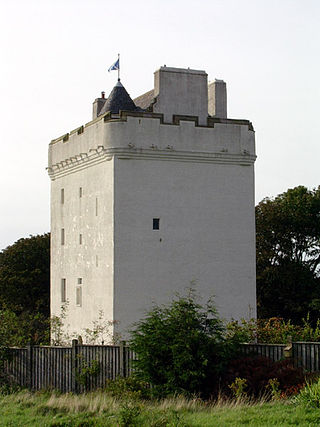
Law Castle is situated on the lower slopes of Law Hill on the edge of West Kilbride, in North Ayrshire, Scotland. It is around 200 metres (660 ft) from the railway station.
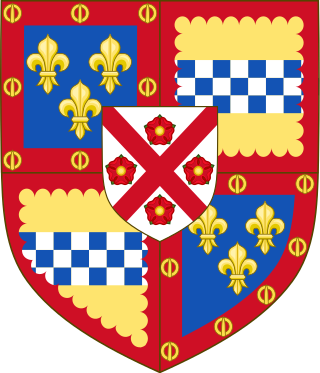
John Stewart, 1st Earl of Lennox was a Scottish earl. He was known as Lord Darnley and later as the Earl of Lennox.
Anne Hamilton, Countess of Huntly, was a Scottish noblewoman and a member of the powerful Hamilton family which had a strong claim to the Scottish crown. Her father James Hamilton, Duke of Châtellerault, 2nd Earl of Arran was heir presumptive to the throne of Scotland after Mary, Queen of Scots prior to the birth of the latter's son Prince James in 1566. Anne was the wife of George Gordon, 5th Earl of Huntly, Lord Chancellor of Scotland and a chief conspirator during the reign of Queen Mary.
Mary Stewart, Countess of Arran was the eldest daughter of King James II of Scotland and Mary of Guelders. King James III of Scotland was her eldest brother. She married twice: firstly, to Thomas Boyd, 1st Earl of Arran; secondly, to James Hamilton, 1st Lord Hamilton. It was through her children by her second husband that the Hamilton earls of Arran and the Stewart earls of Lennox derived their claim to the Kingdom of Scotland.
Margaret Stewart was the younger daughter of James II of Scotland and Mary of Guelders. Once engaged to the Lancastrian Prince of Wales, Margaret instead became the mistress of William Crichton, 3rd Lord Crichton, and the mother of his illegitimate daughter, Margaret Crichton, later Countess of Rothes, and possibly his son, Sir James Crichton, progenitor of the Viscounts of Frendraught. Margaret and Lord Crichton may have been married later, after the death of Crichton's wife.
Alexander Boyd, 3rd Lord Boyd was a Scottish noble.
Hugh Montgomerie, 3rd Earl of Eglinton was a Scottish aristocrat who was a strong supporter of Mary Queen of Scots. He was an important participant in a tumultuous period of Scottish history.
References
- Boyd, Arthur Sumner Jr. (1924). The Boyd family of York County, Main. New York: Leland E. Dorthy. pp. 31.
Attribution:
- This article incorporates text from a publication now in the public domain : Chisholm, Hugh, ed. (1911). "Boyd, Robert Boyd, Lord". Encyclopædia Britannica . Vol. 4 (11th ed.). Cambridge University Press. pp. 353–354.
 This article incorporates text from this source, which is in the public domain :Balfour, Paul, James (1904). The Scots peerage; founded on Wood's edition of Sir Robert Douglas's peerage of Scotland; containing an historical and genealogical account of the nobility of that kingdom. Vol. 5. Edinburgh: D. Douglas. pp. 148, 149.
This article incorporates text from this source, which is in the public domain :Balfour, Paul, James (1904). The Scots peerage; founded on Wood's edition of Sir Robert Douglas's peerage of Scotland; containing an historical and genealogical account of the nobility of that kingdom. Vol. 5. Edinburgh: D. Douglas. pp. 148, 149.{{cite book}}: CS1 maint: multiple names: authors list (link)